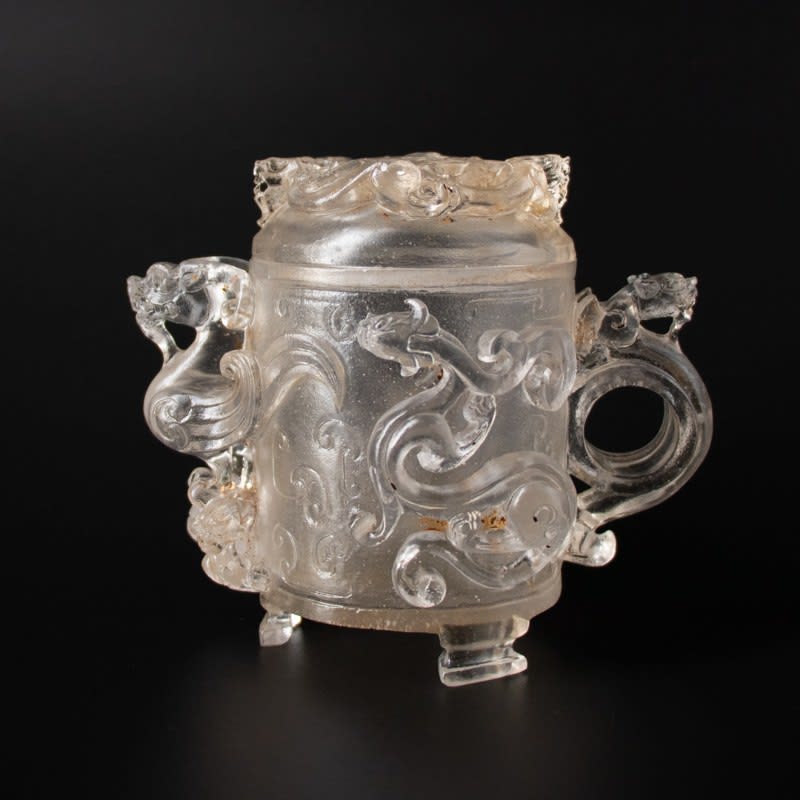Qing dynasty lidded cup , 1644-1912 CE
Glass
ES.9921
A fine Chinese cast glass in the shape of a sacrificial vessel with cover. The glass is colourless and resembles the purity and brilliance of naturally occurring rock-crystal. Shaped by...
A fine Chinese cast glass in the shape of a sacrificial vessel with cover. The glass is colourless and resembles the purity and brilliance of naturally occurring rock-crystal. Shaped by mould, the piece is elegantly decorated with figures of dragons in high relief, one of which serves as a handle, while two other dragons are arranged in the form of a circle on top of the lid. The vessel stands on three short feet. In China, vessels of a similar shape were often made from bronze since ancient times, particularly during the Shang dynasty, when they were used in rites performed on an ancestral altar or buried with the dead. This vessel therefore represents the artisan attempt to recreate and reinterpret these antique shapes and to give them new life through glass.
In the Qing dynasty (1644-1912) glassmaking witnessed a big revival, probably a result of the imperial support, as many ateliers which were working specifically for the palace were established. The creation of these imperial workshops and their openness towards the introduction of western techniques, lead to the flourishing of Chinese glassmaking. Qing glass production was marked by enthusiastic support from the emperor, princes, and high officials and glass objects like the ones presented here were luxury articles. In the Kangxi period (1661-1722, the third emperor of the Qing dynasty) glass imitation of gems reached its peak, with clear glass used in place of rock crystal. Rock crystal was a material treasured by the Chinese people in the same way as they treasured jade and was a symbol of purity
In the Qing dynasty (1644-1912) glassmaking witnessed a big revival, probably a result of the imperial support, as many ateliers which were working specifically for the palace were established. The creation of these imperial workshops and their openness towards the introduction of western techniques, lead to the flourishing of Chinese glassmaking. Qing glass production was marked by enthusiastic support from the emperor, princes, and high officials and glass objects like the ones presented here were luxury articles. In the Kangxi period (1661-1722, the third emperor of the Qing dynasty) glass imitation of gems reached its peak, with clear glass used in place of rock crystal. Rock crystal was a material treasured by the Chinese people in the same way as they treasured jade and was a symbol of purity
